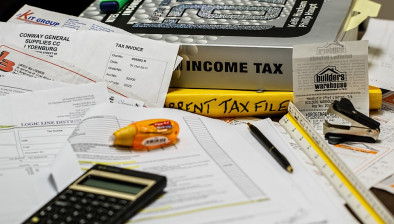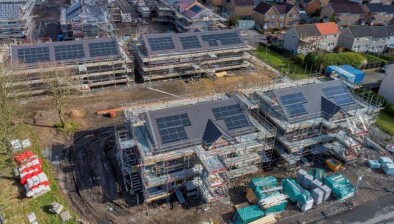Paul Hilton: LBTT should help Scotland out of its housing emergency, not the opposite

Paul Hilton
After a survey of ESPC members sparked calls for a fairer and more proportionate system of LBTT, CEO Paul Hilton shares how the tax impacts first time buyers and the rental market via small and first time landlords, and looks at the wider picture in light of the current housing emergency.
Ten years ago, Scotland replaced the traditional stamp duty tax with the land and buildings transaction tax, aimed at creating a more inclusive tax system. A decade on and at a time when housing legislation is subject to a massive shake-up, we thought we’d take the temperature of ESPC members on how LBTT is working in practice.
The overwhelming view is that LBTT is neither fair nor proportionate, and is acting as a barrier for first time buyers and small landlords trying to enter the property market, which is further exacerbating the crisis in our industry.
82% of ESPC solicitor estate agent member firms who responded to our survey don’t believe that the current LBTT bands and rates are fair and proportionate. Our members were resolute in the view that the support for first time buyers is not reflective of the market as a whole given the average property price increase since LBTT was introduced in 2015. There is also a concern that the rates on family homes can stifle sales and movements due to such a large tax burden in key sectors and the Additional Dwelling Supplement (ADS) payable on second homes needs to be reviewed with consistent feedback that the amount charged is too high and the system too complex.
The feedback highlighted the differences in the Scottish and English tax band systems, and that a flat rate across all of Scotland is not proportionate.
Furthermore, 62% felt that LBTT affects housing affordability, particularly for first-time buyers. There were significant geographic differences to these responses, but this serves to highlight the disparity in local property pricing. Most respondents reported that first time buyers were finding that they were purchasing property above the £175,000 purchase price threshold. This is the zero tax threshold for first time buyers, where they are exempt from paying LBTT on the first £175,000 of the property purchase price.
With many first time buyers saving everything to pay for the deposit and legal fees, the LBTT on top of this is another constraint. The feeling is that the bands aren’t reflective of the current market. According to Registers of Scotland, the average price of a first time buyers’ property in Edinburgh in 2024 was £253,424, resulting in an LBTT bill of £1,671, just £600 less than a more experienced purchaser.
The family home market concern stems from the current bands. There was clear feedback that the bands jump too sharply to be reflective of the current property market. Expanding Band 2 (currently limited to £250,000-£325,000) to increase to £250,000 to £500,000) would substantially improve the tax bill for the majority of buyers within the capital and surrounding areas. In order to improve the system, ESPC is calling for a review of the current bands and suggests the introduction of a banded system that takes into account the location of the property and local property prices.
The current LBTT bands have not kept up with the changes of the market since its introduction. Looking at ESPC data covering Edinburgh, the Lothians, Fife and the Scottish Borders, we recorded significantly less Band 0 sales in 2024 compared to 2015, whilst Band 2 sales increased by 33% over this time period, and Band 3 sales volumes increased by 38%. There is no clearer indication that the Bands need to be reviewed on a more frequent basis to ensure they keep pace with the market than this.
Regionality is also an issue. There are far fewer homes in Edinburgh that are available within the LBTT relief zone than there are in other parts of Scotland. We’d like to see a fairer system introduced which introduces zonal pricing, taking into account average selling prices locally.
The average selling price of a property in Edinburgh in 2024 was £298,944 compared to the average selling price in Fife standing at £234,609. Just 5% of ESPC property sales in Edinburgh fell within the Band 0 rate in 2024, compared to 32% when LBTT was introduced in 2015. This has resulted in a significant reduction in Band 0 property sales. And it’s not just Edinburgh that is impacted. In 2015, 49% of Midlothian sales fell within Band 0 and 37% of East Lothian sales. In 2024, just 9% of sales in both of these areas fell within Band 0.
According to Registers of Scotland data, in 2024, the average sale price of a first time buyer property in Fife £136,282 and £138,014 in the Scottish Borders, compared to £223,808 in Edinburgh and £218,953 in East Lothian. A first time buyer LBTT bill in Edinburgh is £1,671, compared to no cost in Fife. This disparity is not fair and instantly identifies the need for a zonal pricing system. An extension of the zonal pricing model which is based on location should, in our view, be rolled out across first time buyer relief. A relief to £225,000 across the more expensive areas for first time buyers such as Edinburgh, East Lothian and Midlothian, whilst a relief to £175,000 for less price sensitive areas such as Fife, Scottish Borders and West Lothian could be maintained.
The largest feedback was on the cost of the ADS, which soared to 8% in December 2024. 88% of ESPC members do not believe that the current structure is fair and reflective, with the current rate acting as a barrier to market for many small or first-time landlords who are essential to maintaining an availability of rental stock. Our members believe this is damaging to the investor market, hindering property investment and has the potential to add to the housing crisis rather than aid it. From our own small rental company, ESPC Lettings, we’ve seen a 14% drop in stock, with landlords choosing to exit the market but this is not being met by new landlords to the market. We’d also like to see an ADS exemption for first time landlords or those with only one other buy-to-let property for a two-year period, to allow landlords to re-enter the market and provide some much needed housing stock for the transient Edinburgh population.
As Scotland enters its second year of a national housing emergency, it is staggering that ADS and LBTT are escalating problems rather than being used as catalysts to drive our industry out of crisis.







